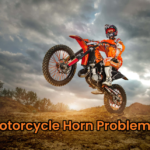Introduction: Why Knowing When to Replace Your Dirt Bike Clutch Is Crucial
When it comes to dirt bikes, the clutch plays a vital role in the smooth transmission of power from the engine to the wheels. Without a properly functioning clutch, you’re likely to face sluggish performance, uneven power delivery, and even complete failure while riding. Unfortunately, dirt bike clutches don’t last forever, and knowing when to replace your clutch is critical to ensuring your bike stays in top condition.

Understanding the signs of clutch failure can save you both time and money. A clutch that’s worn out or malfunctioning can cause significant damage to other parts of your bike if left unchecked. In this guide, we’ll break down the 7 most common issues you might face with your dirt bike clutch and explain how to tell when it’s time for a replacement. Read on to discover the signs you shouldn’t ignore and how to keep your dirt bike running smoothly.
1. Clutch Slipping: A Common Sign of Wear and Tear
One of the most common issues riders face with dirt bike clutches is slipping. This happens when the clutch plates can no longer engage properly, causing a loss of power and a noticeable decrease in performance.
Why Does Clutch Slipping Happen? Over time, clutch plates can wear down due to the constant friction they experience while engaging and disengaging. As the plates become thinner and less effective at gripping the flywheel, the clutch starts slipping. This means the engine revs but the bike doesn’t accelerate as it should, which is a clear sign that the clutch is failing.
How to Tell if the Clutch is Slipping:
- If you notice that your bike’s RPMs are increasing without a corresponding increase in speed, it’s likely that the clutch is slipping.
- You might also hear a strange whining or slipping noise when you shift gears.
- A significant loss of power when accelerating or shifting into higher gears is another indicator of clutch slipping.
If you experience any of these symptoms, it’s time to inspect the clutch plates and replace them if necessary.
2. Clutch Dragging: A Result of Worn Plates
Another common issue dirt bike riders face is clutch dragging. This happens when the clutch plates don’t fully disengage when you pull in the clutch lever, causing resistance in the transmission.
Why Does Clutch Dragging Happen? Clutch dragging usually occurs when the clutch plates are warped or worn out. The plates may not release fully from the flywheel, causing friction and resistance that makes shifting gears difficult or even impossible. When the clutch doesn’t disengage properly, it can cause the bike to move forward even when the clutch lever is pulled in.
How to Tell if the Clutch is Dragging:
- If your bike is creeping forward when you try to shift into gear, it’s a clear sign of clutch dragging.
- You may also notice that shifting gears becomes harder, and the bike may resist when trying to switch between gears.
- A poorly adjusted clutch lever or improper lever cable fitting can also contribute to dragging.
Clutch dragging can be dangerous and lead to premature wear of other components, so it’s important to address the issue as soon as possible.
3. Clutch Grabbing: A Sudden and Abrupt Engagement
Clutch grabbing is another issue that can arise when your clutch is on the verge of failure. This occurs when the clutch suddenly engages with too much force, making the bike jerk or lurch forward unexpectedly.
Why Does Clutch Grabbing Happen? Clutch grabbing is often the result of uneven wear on the clutch plates. If the friction material on the plates has worn down in an uneven pattern, it can cause a jerky or aggressive engagement of the clutch. This can make the ride feel unpredictable and can even throw you off balance if you’re not prepared for the sudden movement.
How to Tell if the Clutch is Grabbing:
- If you notice that the bike jerks or lurches forward when you release the clutch lever, that’s a clear sign of grabbing.
- You may feel the bike “catch” abruptly when you try to engage the clutch, making the ride feel choppy and hard to control.
Clutch grabbing should be addressed immediately, as it can damage the clutch assembly and other parts of your transmission.
4. Clutch Adjustment Issues: Poor Lever Feel or Performance
Another issue that can affect your dirt bike clutch is improper clutch adjustment. Over time, the clutch cable or hydraulic system can stretch, which affects how the clutch lever feels and how the clutch disengages.
Why Does Clutch Adjustment Become a Problem? Clutch cables and hydraulic systems can stretch or wear out due to constant use. When the cable becomes too loose or too tight, it can affect how the clutch disengages, leading to poor performance. This may also cause you to have trouble shifting gears or cause your bike to lurch forward when it shouldn’t.
How to Tell if the Clutch Needs Adjustment:
- If you notice that the clutch lever feels too soft or too stiff, it could be a sign that the clutch cable needs adjusting.
- Difficulty shifting gears or inconsistent clutch disengagement can also point to an adjustment issue.
Regular maintenance and inspection of the clutch cable can help prevent this issue from causing major performance problems.
5. Clutch Lever Stuck or Hard to Pull
Sometimes, the clutch lever can become stuck or hard to pull, which can make shifting gears difficult or impossible. A stuck clutch lever may not return to its original position after you pull it in, or it may feel unusually stiff when pulled.
Why Does the Clutch Lever Become Stuck or Hard to Pull? A stuck or stiff clutch lever is typically the result of a damaged cable or low hydraulic fluid levels in a hydraulic clutch system. If the cable is frayed or damaged, it can cause resistance when trying to pull the lever. Similarly, low fluid levels in the hydraulic system can cause sluggish operation.
How to Tell if the Clutch Lever is Stuck or Hard to Pull:
- If the clutch lever feels unusually stiff or requires excessive force to pull in, it’s a sign that the cable or hydraulic system may be damaged.
- A stuck clutch lever that doesn’t return to its original position after being pulled is another indicator of an issue.
In this case, inspect the cable or hydraulic lines and replace any worn-out parts.
6. Hard Clutch Movement: Difficulty Engaging or Disengaging
If your clutch lever feels unusually hard to move, it could indicate issues with the clutch mechanism. This can occur due to internal damage, contamination, or improper lubrication.
Why Does Hard Clutch Movement Occur? Hard clutch movement usually occurs when there is insufficient lubrication in the clutch system or when debris enters the clutch mechanism. This can cause the clutch to be difficult to operate and may even prevent the clutch from fully disengaging or engaging.
How to Tell if the Clutch is Hard to Move:
- If you struggle to pull the clutch lever or find it unusually stiff, it could indicate issues within the clutch system.
- A significant amount of resistance when trying to engage or disengage the clutch is another warning sign.
Ensure proper lubrication and clean the clutch system regularly to avoid this issue.
7. Burning Smell: A Clear Sign of Clutch Overheating
A burning smell coming from the engine or clutch area is one of the most noticeable signs of clutch failure. If you notice an acrid, burnt odor during or after riding, it could mean that the clutch is overheating and the friction plates are starting to burn.
Why Does the Burning Smell Occur? The burning smell usually occurs when the clutch plates overheat due to excessive friction. This can happen if the clutch is used too much or if the plates have worn out and can no longer effectively grip the flywheel. The burning smell is often accompanied by a decrease in performance and may indicate that the clutch plates have become glazed or burned.
How to Tell if the Clutch is Burning:
- A strong, acrid smell similar to burning rubber or oil is a clear sign of clutch overheating.
- The clutch may also feel less responsive or completely unresponsive after prolonged use.
If you notice a burning smell, stop riding immediately and inspect the clutch for damage. Continuing to ride with a burnt clutch can lead to further damage to the engine or transmission.
Conclusion: Recognizing the Signs and Replacing Your Dirt Bike Clutch
A malfunctioning dirt bike clutch can significantly impact your riding experience, causing problems ranging from poor performance to complete failure. Recognizing the early signs of clutch wear and tear is key to preventing further damage and maintaining optimal performance.
By watching for signs like slipping, dragging, grabbing, hard movement, or the burning smell, you can diagnose clutch issues early and take action before they lead to more severe problems. Regular inspection and maintenance of your clutch system can ensure that your dirt bike stays in top shape for longer.
FAQs
How do I know if my dirt bike clutch is slipping?
If your bike revs without increasing speed, or you hear a whining noise during gear shifts, your clutch may be slipping.
What causes clutch dragging in dirt bikes?
Clutch dragging is caused by worn-out clutch plates that don’t fully disengage, leading to resistance and difficulty shifting gears.
Why is my clutch lever hard to pull?
A stiff or hard-to-pull clutch lever may indicate a damaged cable, low hydraulic fluid, or internal clutch issues.
What should I do if I smell something burning while riding?
A burning smell usually indicates an overheating clutch. Stop riding immediately and inspect the clutch plates for damage.
How often should I replace my dirt bike clutch?
The lifespan of a dirt bike clutch depends on usage and riding conditions. If you experience any of the signs mentioned above, it’s time to replace the clutch.
ALSO READ:
Grasping Motorcycle Transmission Issues and Fixes – AuttoMotoGeek
Unearth Hidden Thrills: A Comprehensive Guide to Dirt Bike Restoration – AuttoMotoGeek





